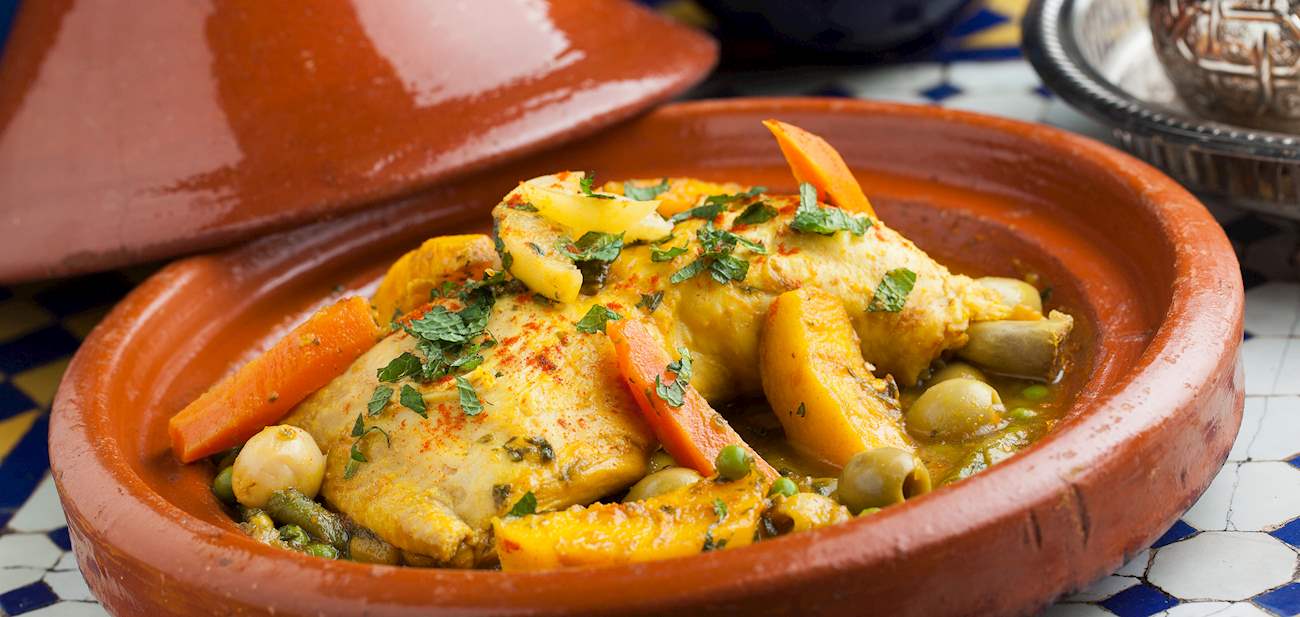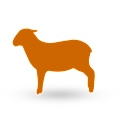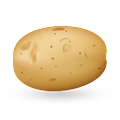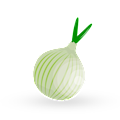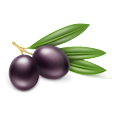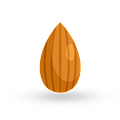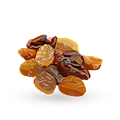Tajine, also known as tagine, refers both to the rich Moroccan stews and the cooking vessel used to make them. When referring to the cooking vessel, it is a round and shallow, clay or ceramic casserole with a tall, pointy, conical lid.
The same lid fits into the base, so the steam condenses on its interior and drops back into the stew without any waste of flavors and moisture. The pots are ideal for slow cooking over embers or on a stove, resulting in buttery, tender vegetables and meat that falls off the bone.
Tajines can be glazed or unglazed - the unglazed ones are earthier and darken over time, while the glazed ones are recommended for people who cook infrequently.
VARIATIONS OF Tajine
MOST ICONIC Tajine
View moreAs the name suggests, the star ingredient in this traditional Moroccan dish is chicken, preferably bone-in chicken cuts such as legs, thighs, or drumsticks. Like other tajine dishes, this chicken variety is also prepared in the eponymous conical cooking vessel.
The meat is neatly arranged with various vegetables such as onions, carrots, tomatoes, or potatoes, and the whole dish is usually seasoned with cumin, saffron, parsley, or coriander. Typical variations also may include preserved lemons, olives, almonds, or apricots.
MOST ICONIC Chicken Tajine
View moreNumerous tiny, light, tender grains, ideally arranged to form a pyramid and served on a platter at the end of a meal - that is couscous, the national dish of Morocco and Algeria and a must-have dish in any Moroccan and Algerian restaurant. The word itself refers both to the complete dish and the tiny grains of semolina.
Semolina flour is sprinkled with water until it forms into tiny pellets that are then pushed through a sieve. Couscous is usually prepared on Fridays for lunch, when whole families get together for the most important meal of the week. The dish is traditionally made in a metal steamer pot called a couscoussier, where the stew is on the bottom, while the small grains are in the perforated basket on top, cooking in the steam that is rising from the rich stew.
MOST ICONIC Couscous (dish)
View moreKefta tagine is a classic Morrocan tagine variety consisting of small meatballs in a homemade tomato sauce, and are prepared in the eponymous conical cooking vessel.
The meatballs are shaped into spheres the size of a cherry tomato, made of ground lamb or beef meat (or a combination of two), and flavored with spices such as paprika, cumin, parsley, coriander, black pepper, and salt, and cooked in a piquant tomato sauce.
Sometimes kofta tagine also includes eggs, which are added to the sauce near the end of cooking and cooked until poached.
Kefta tagine is mainly prepared at home and is a communal dish traditionally served straight from the tagine pot, with khobz or some other Moroccan bread used to scoop the tasty stew.
Loubia is a traditional North African dish consisting of stewed white beans. This dish is very popular in Moroccan, Tunisian, Algerian, and Libyan homes, where the beans that have been simmered in a zesty tomato-based sauce are typically scooped up with homemade flatbread.
It is comfort food that can be served both as an appetizer, garnished with some coriander or parsley, and as a side dish - especially when used as an accompaniment to fried fish. Simple, quick, and delicious - it is unsurprising that loubia is commonly found in homes throughout Maghreb region.
Kouraine is a traditional dish that's often prepared during Eid. The dish is made with a combination of lamb, cow, or goat legs, cumin, garlic, chickpeas, paprika, ginger, turmeric, and saffron. Some people like to add raisins to the dish in order to give kouraine a slightly sweet flavor.
The stew is cooked until the sauce develops a thick consistency, and it's then served, ideally with some hot peppers and bread.
Mreifisa is a traditional dish originating from Western Sahara. This comforting stew is usually served for larger groups of people and is prepared with lamb, onions, garlic, beef broth, and olive oil. The lamb is cut into cubes, then combined with garlic, onions, and olive oil until the vegetables soften and the lamb is slightly browned.
The concoction is then combined with the broth, water, and salt to cook until the lamb becomes tender. Mreifisa is traditionally served with a simple bread consisting of flour, water, and salt. The meat is often served separately from the broth, which is poured over the bread.
TasteAtlas food rankings are based on the ratings of the TasteAtlas audience, with a series of mechanisms that recognize real users and that ignore bot, nationalist or local patriotic ratings, and give additional value to the ratings of users that the system recognizes as knowledgeable. For the “Top 7 Moroccan Stews” list until April 15, 2025, 2,465 ratings were recorded, of which 772 were recognized by the system as legitimate. TasteAtlas Rankings should not be seen as the final global conclusion about food. Their purpose is to promote excellent local foods, instill pride in traditional dishes, and arouse curiosity about dishes you haven’t tried.
